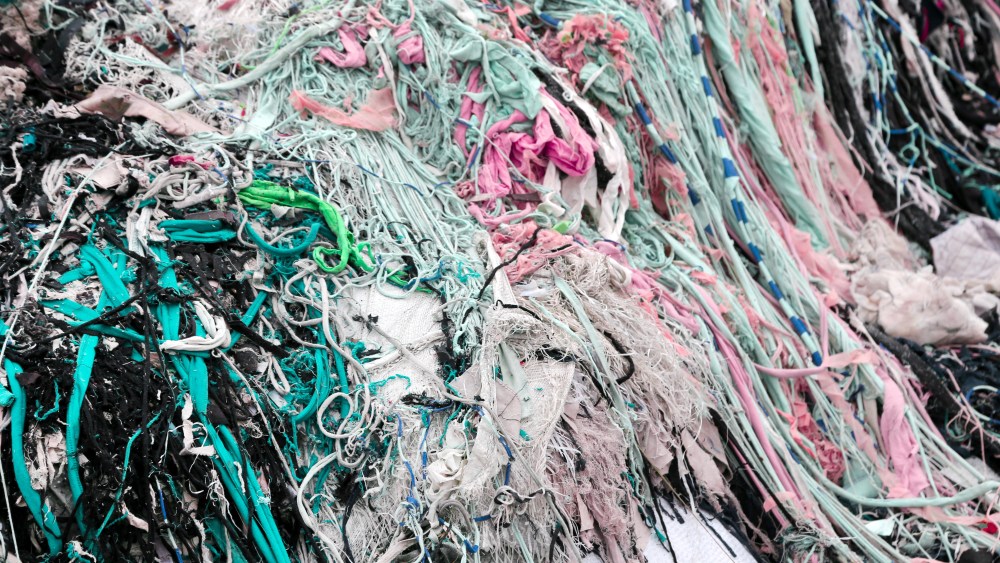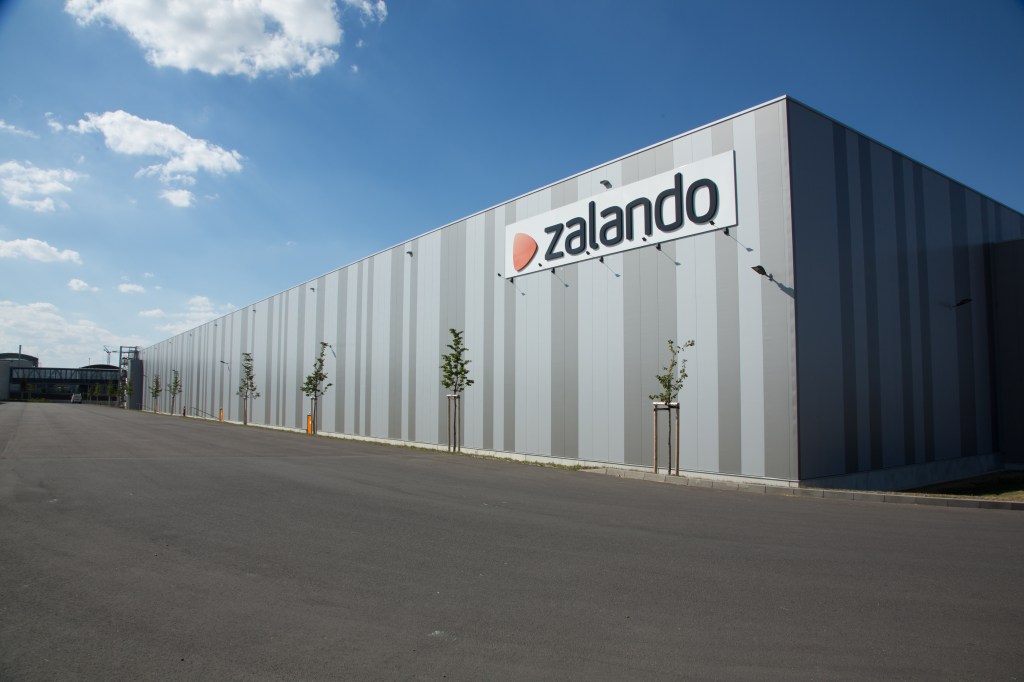MILAN — Fashion’s sustainable transition is taking place rapidly, but not fast enough to meet regulatory frameworks, ensure business survival, or address the ongoing imbalances the sector generates along its supply chain.
The next goal for the eco-evolution is ramping up the scale of initiatives to involve more regions, especially in the Global South, and companies, including fast fashion players.
Taking stock three years after launching The Sustainability Pledge — a United Nations Economic Commission for Europe-promoted and backed network geared at advancing toward a more traceable, transparent, circular and sustainable garment and footwear sector — the intergovernmental institution, in partnership with the Fondazione Pistoletto Cittadellarte, hosted a summit at Milan’s Triennale design museum to highlight advances and the potential of the toolbox it introduced with the pledge.
You May Also Like
The latter is aimed at helping companies chart their own eco-transition and make valuable and reliable sustainability claims via policies, information exchange standards and blockchain pilots geared at transparency and traceability.
According to Paolo Naldini, director of Fondazione Pistoletto Cittadellarte, The Sustainability Pledge has triggered a mindset shift from “viewing the future to envisioning it,” tackling issues before they become evident, as well as removing the veil of opacity that oftentimes hides mismanagement across the fashion value chain.
Since 2021 the pledge has gathered about 800 partners including experts, policymakers, businesses, academics and nongovernmental organizations across key regions for the apparel and footwear industries, but that’s not enough, according to Tatiana Molcean, executive secretary at UNECE.

“If we don’t cover the globe entirely, if you don’t have everyone on board [we don’t succeed]. We need to scale up, otherwise we cannot change the pace we need and as rapidly as we need,” the executive told WWD on the sidelines of the event.
“As long as we don’t have it addressed globally, if we don’t have it covered on the larger scale, we’ll always have pocket gaps for possibilities to disbalance,” she added. “Of course, we all like to believe in the bright, the nice and the positive thinking, but this is an industry, it’s a business, it’s part of the private sector. That’s why it’s very, very important to have a global perspective. And I’m not saying to cover 193 countries globally. But to really have as regional an approach [as possible],” she offered.
Regarded as one of the most polluting sectors with ripple effects not only on greenhouse gas emissions and climate change but also social imbalances and human rights, fashion has many avenues to sustainability, from traceability and the circular economy to waste management — all equally important and to be carefully assessed and measured, Molcean argued.
“One understanding for us was that you cannot really do something, make a policy if you don’t have data,” Molcean said. “How do you measure, where do you start from, what is good, what is normal, what is not normal? This is why we started developing really this traceability understanding, putting some context to the whole sector.”

The data-backed and continually fine-tuned common framework, Molcean said, needs to account for the financial benefits — or disadvantages — that the sustainable transition entails.
“In practice, it’s also a lot about financials. And if you still have more convenience to produce in this way, if you have no responsibility for the waste that you have created, we cannot really address this issue. So we’ll have to get the regulations globally, not only, for example, the European Union which has developed quite a strong regulatory framework now, we have to do more, and to create an environment where there is even financial interest in being sustainable. We have to create these opportunities. For the sector, I think we are moving in this direction, there is no alternative. I think for those in particular from fast fashion, they have to understand this, and instead of complying to the rules after they are created, they have to be part of these rules now, and to engage as much as possible. I think it’s in their interest,” she said.
“There are data that show that still many decisions, financial decisions or commercial decisions, are taken based on the fact that being sustainable is more expensive. So, in order to also reduce these kinds of differences and disadvantages we need to put everyone on the same playing field when it comes to sustainability,” Molcean opined.
That the one-day summit was taking place in Italy is testament to the country’s “world leading role as a producer of luxury goods and fashion,” said Camera Nazionale della Moda Italiana’s chairman Carlo Capasa, highlighting how the country — home to 62,000 fashion companies — covers both the up- and downstreams of the supply chain.
The fashion chamber introduced its sustainability manifesto in 2012 and has since pressured the European Fashion Association, or EFA, on topics such as the digital product passport and eco-design, joined the technical secretariat of the Product Environmental Footprint, or PEF, working group, linked with the Ellen MacArthur Foundation and the United Nations’ Ethical Fashion Initiative, in addition to founding Re.crea, a consortium for local fashion brands to collectively tackle fashion waste management. Next month the fashion chamber will release an internal study on durability of luxury goods, hinged on the physical and emotional lifespan of fashion products, Capasa said.
What Makes a Good Pledge?
“The Sustainability Pledge 3-years monitoring report” presented the results of monitoring the activities of the 110 pledges submitted so far, which involved 800 partners in 28 countries. The study provided the criteria that have to be considered in order to submit a pledge, and listed 35 traceability and transparency key performance indicators (or KPIs) divided into two categories, depending on acting at a corporate level or on product and materials within the supply chain.
“It’s very important that an action plan is there and it is endorsed and guided by senior management in the organization,” said Maria Teresa Pisani, chief of the trade facilitation section in the economic cooperation and trade division at UNECE. Companies also have to take into consideration the adoption of a multi-stakeholder approach, including representatives among affected stakeholders.
“There are some unintended consequences of the policy regulations, actions that are taken in certain parts of the world and that are going to affect actors, particularly the more vulnerable ones in emerging and developing economies. So it’s very important that in the action some actors are at the table and are rightly engaged,” continued Pisani.
“Meaningful stakeholder engagement should be an integral part of an enterprise’s due diligence process. And one of the many relevant aspects is on the verification, monitoring and validation of progress on due diligence and its effectiveness,” said Nicholas Robin, policy analyst, data and measurement at the center for responsible business conduct at OECD (Organization for Economic Co-operation and Development).
Another request for companies is to have the ability to implement the pledge at scale and scope and that should be evidence monitoring and reporting of impact for the action that has been taken. Top management support and governance structure assets are required during the whole process as well as the demonstration of shared value on value chain partners, including SMEs.

“Risk-based diligence is a core concept in the OECD,” said Robin about another among the criteria. “According to the OECD due diligence guidance for responsible supply chains in the garment and footwear sector, the measures that an enterprise takes to conduct due diligence should be commensurate to the severity and likelihood of the adverse impact. If they’re high, the due diligence should be more extensive. So this is why this criterion on risk-based prioritization is important.”
Additional criteria stress the importance of how information obtained through traceability is and would be used, as well as of keeping track of the progress and actions of the pledge to be submitted. Robin highlighted that such information is used to prevent and mitigate adverse impacts in the supply chain.
KPIs Are Always WIP
Along with the criteria, the one-day event discussed the key findings and lessons learned since 2021, including KPIs and innovative solutions to foster impact.
“KPIs are the key tool by which you can improve performance and transparency and traceability… [which] are essential for making progress on sustainability,” said Christian Hudson, lead of global textile transparency governance at Deutsche Gesellschaft für internationale Zusammenarbeit (GIZ) GmbH International Services.
“One way you can see [transparency and traceability] is as the strong men at the bottom of a human pyramid of acrobats at the circus. It’s these guys at the bottom who are supporting our sustainability decisions at the top. And KPIs are the way we can look at that human pyramid and judge whether it’s going to be strong enough to support the decisions we’re making… How do we judge that? Is it from the size of their arms, the length of their legs or the width of their mustaches?” said Hudson. To this end, he underscored that it’s important that the KPIs are specific, measurable, attainable, relevant, time-limited, as well as comparable, clear and cost-effective.
“We said we will try and onboard as many of the suppliers as possible, share a lot of their data with the ecosystem players and the brands to start with, so that they can start measuring where they are,” said Hrishikesh Rajan, founder and chief growth officer of TrusTrace, about one of the implementations of the company. A 2020 LVMH Innovation Award finalist, TrusTrace is a digital product traceability and supply chain transparency platform that enables brands, suppliers, standards bodies, certifying bodies and other players to collaborate to improve the impact of fashion supply chains on the planet and people.
Rajan said three years ago, when the company joined The Sustainability Pledge, it had roughly 5,000 suppliers on its platform, while today it gathers 45,000 factories, but new challenges have arisen. “Many of them have different levels of maturity.. .and we need to cater to every one of them, right? So the platform can’t be really advanced because it has to cater to people who are just getting started, too.” As the firm tries to “make our platform as open as possible” and bring more and more suppliers and brands to collaborate together, it also has to ensure that “confidential information is still kept aside for the different brands,” said Rajan.
“We can find a wide range of platforms and standards in the traceability landscape, but there’s a lack of interoperability between them — and that’s been a problem for their effectiveness,” echoed Ana Ibarra Diaz, head of traceability at Zara parent company Inditex. In one of its pledges, the company committed to propel such interoperability and improve its internal traceability system in order to help its suppliers fulfill its requirements, which the company was also working to constantly update and expand.
“If we talk about traceability requirements, the most relevant KPI is the number of suppliers trained,” said Ibarra Diaz, underscoring how training is essential to ensure the understanding, and therefore compliance, of requirements from all players. She said Inditex gave capacity building sessions to more than 1,000 suppliers in 35 countries in 2022 and more than 300 suppliers in 20 countries in 2023. “We did it online, retrieving information from our internal platforms by weekly reports and also asking the attendant to register to in-person trainings in order to be able to do a reliable comparable monitoring,” said Ibarra Diaz.

“What we’ve learned so far is that having that training in place is really the difference-maker of the quality of information and how participative the groups actually are,” agreed Ashley Gill, chief strategy officer at Textile Exchange.
One of the key projects implemented by the American company is a geospatial information system to monitor impacts on the ground at the farm level. “This tool is actually used to identify the polygon data or the map of where the farms actually are, which can be used then to overlay with information about deforestation or about access to water,” said Gill, underscoring the technology was implemented with 400 farms that are certified to its Responsible Wool Standard or one of the accompanying alpaca and mohair ones.
“What we have seen is that training is really important, because we wanted those farms to use that system themselves directly. So we provided free access…and training for all of those farms to be able to input their own information that was then validated by the certification body,” said Gill. Such a tool empowered farmers to identify specific steps they could have adopted to address, for example, land conversion or promoting better grazing systems, said Gill, mentioning initiatives that could benefit producers directly even before impacting the whole value chain.
“An important part is that we ensure that the KPIs that we’re tracking don’t just inform the decisions that are being made in offices, but also the decisions that are being made in the facilities where that change needs to happen,” she said. “And to remind ourselves that the intention of all of this work is not to reduce risk for companies [nor] for us to be able to sell one more product. It’s actually so that we can take accountability and responsibility for the impact that our industry has on the world and on people. And that kind of transparency is able to be a catalyst for transformation as long as we’re measuring the right thing and giving information to the people who have the responsibility and ability to make those changes,” said Gill.
One Pledge at a Time
The UNECE’s Sustainability Pledge is fueled by its members, which have made individual pledges to implement sustainability- and traceability-related initiatives in key districts over crucial topics.
The Clean Clothes Campaign pledge, called Fashionchecker and launched in 2021, is aimed at achieving a living wage for all garment workers in global supply chains, by increasing their transparency all the while fostering policies and assessing their practical effectiveness.
Clean Clothes Campaign’s transparency lead Paul Roeland highlighted how their pledge stems from a holistic vision of the supply chain, to avoid, for instance, that vulnerable workers and their conditions are overlooked or turned a blind eye on.
“Partial transparency does not work. Partial transparency is for instance when a single gatekeeper gets access to a limited set of information,” Roeland said. “We need full accountability and for that we need full transparency addresses,” with data accessible to stakeholders, lawmakers and law enforcers.
Such an approach comes with a silver lining, too, Roeland argued. “If you want to restore trust with your consumers, [to show] that your product is actually worth their money, you will have to convince them that it’s made sustainable. So business does have an interest in becoming traceable, and transparent,” he said.
The Uzbekistan Textile and Garment Industry Association submitted its pledge — Development of a Strategy for ESG Traceability and Transparency in the Textile Industry in Uzbekistan — in 2022 aimed at enhancing the environmental, social and business integrity of management systems, by improving the prevention and mitigation of environmental and social risks and introducing formal procedures for the certification of such management systems in line with best international standards. This comes after decades of alleged labor abuses in the Uzbekistan cotton growing and processing industry.
A key cotton supplier to the global fashion industry, Uzbekistan is making strides, having gathered greater statistics and data among textile enterprises and made them available on a blockchain-backed platform via DNA markers applied to cotton yarns. The textile association’s acting chairman Mirmukhsin Sultanov highlighted the importance of the pilot in aligning the local cotton supply chain to internationally approved standards, including the Better Cotton and Better Work ones.
The United Nations Industrial Development Organization, or UNIDO, has joined the pledge, launching the Switch2CE pilot project, cofunded by the European Union and the government of Finland, tackling recycling of textile waste in Bangladesh. Joined by H&M, the pilot is aimed at setting up a system to sort and recycle blended textile waste and find textile-to-textile recycling solutions.
UNIDO’s chief technical adviser Mark Draeck underscored how the issue is being taken seriously by brands based in the Global North but because of the “complexity of our value chain and the global nature of it, it takes time.”
“What we want to investigate is the use of this as a business opportunity, too, because if you play it right, this is of business interest,” he said.
The SDA Bocconi School of Management officially linked its “Monitor for Circular Fashion” founded in 2020 to The Sustainability Pledge last week.
Born as a scientific and technological community of companies mapping and analyzing industry trends and how these sync with the 2030 Agenda for Sustainable Development adopted by all United Nations members, it is aimed at identifying circular fashion KPIs, defining requirements to evaluate the scale-up of circularity projects, encouraging governments to adopt a harmonized policy framework to support circular fashion initiatives and producing a manifesto and an annual report on advancements.
Being part of the pledge allows the monitor to have a broader community to share its assessments with. “We will have to create an even stronger community in time, in order to share the results transparently with other brands and the whole industry,” said Francesca Romana Rinaldi, UNECE project expert and director for the Monitor for Circular Fashion at the academic institution.


